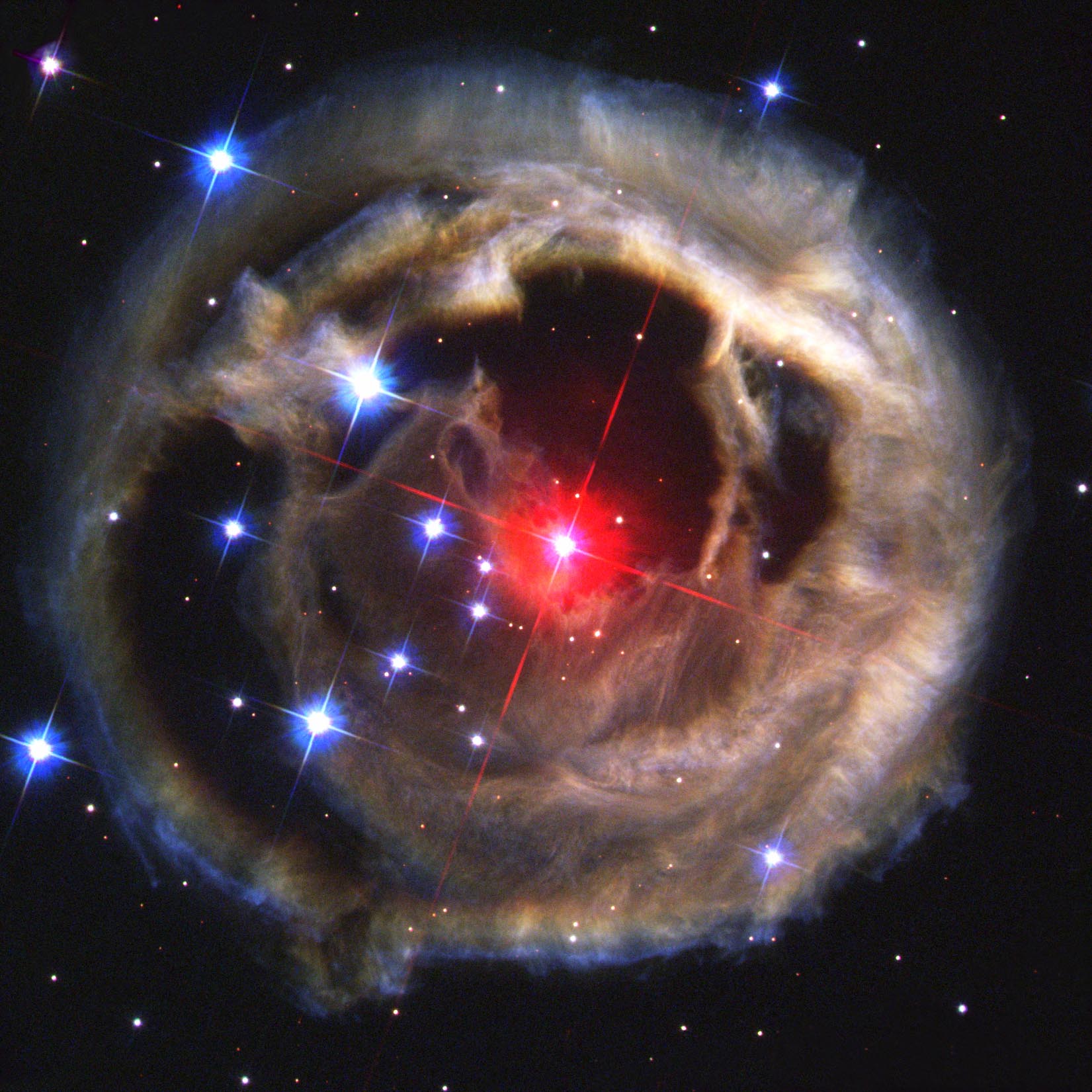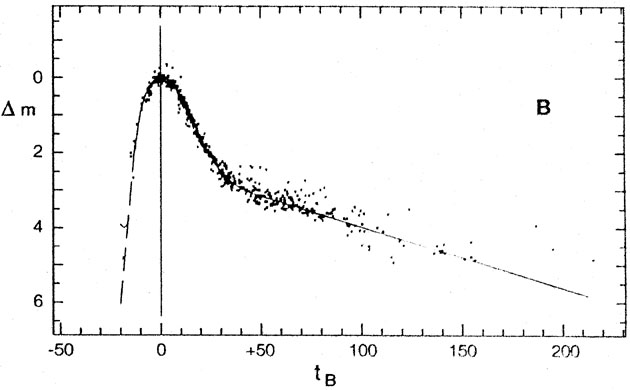Hello again everyone! Now that I've defined what a type Ia supernova is, I think it would be appropriate to define what a light echo is. This should be a shorter post than the last one. Before we start, I'd like to mention the naming scheme for supernovae. It is fairly simple; they are named by the year they are detected. The first supernova in 2015 will be SN 2015A. The second, SN 2015B and so on. After SN 2015Z, we get SN 2015AA, SN 2015AB, and so on. No distinction is made between supernovae types with this naming scheme.
Light Echoes
As mentioned in my previous post, type Ia supernovae are critical to modern cosmology, and a full understanding of how exactly they come about (i.e., the progenitor systems they arise from) is not currently at hand. Due to their importance, such an understanding is desirable. Analyzing a light echo is one possible method of probing the environment of a supernova's progenitor system.
 |
| Based on a diagram by Armin Rest, Harvard University |
Above is a diagram of a light echo. Light from the supernova is directed radially outwards, and some of it is directly headed towards Earth (represented as a red arrow on the diagram). This light will reach us first. However, some light that would not initially have been visible from Earth can scatter o ff of interstellar dust (in the diagram, the light blue band is a sheet of interstellar dust) and redirect itself towards us (represented by the blue arrows on the diagram). The longer path length this light travels necessitates that it arrive at Earth at a later time, much as an echo arrives at a later time than the original sound. Surfaces of constant arrival time are traced out by an ellipsoid, which in most cases can be approximated as a paraboloid because the distance between the observer and the supernova is very large (an ellipsoid with one focus approaching infinity). If the dust that scatters the light is a sheet between the supernova and the observer, the echo will take on the appearance of a ring of light around the original supernova. The positioning and size of this ring can be used to discover the distribution of dust around the progenitor system, and thus discern some properties of the progenitor system that would not otherwise be known.
 |
| A light echo around V838 Monocerotis. The echo is the brown ring. Courtesy Wikimedia Commons. |
Oftentimes telescopes that observe supernova lack the optical resolution to see an actual ring around a light echo. Therefore, we must usually rely on other methods to detect the presence of a light echo. Type Ia supernovae have characteristic ways in which their light fades off. Most commonly, such a fading is shown through a light curve, which plots some measure of luminosity or magnitude versus time.
 |
| An example of the light curve of a type Ia supernova. The capital B is the filter. R. Cadonau, 1987. |
Because the light that scatters off of the dust arrives at later times, it will often arrive as the supernova itself is fading. This is shown in the light curve as a flattening, as light from the echo overcomes the light from the fading supernova. So, if you have a type Ia supernova with a light curve that flattens out, you might have a light echo on your hands. This is the most common method of detecting light echoes.



I'm curious what properties can be determined about the progenitor system by studying light echos. What sort of information are scientists looking for? Have light echos been successfully studied in other systems to glean meaningful information about the progenitor system, or is this field too new for that to have happened yet?
ReplyDeleteThe examples I have come across so far are basically results that tell us about the dust around the system. If calculations/modeling can reasonably be interpreted to show that the dust is within a few parsecs, then we can know (or at least predict) that the system has circumstellar material. The kinds of progenitor systems that give rise to these supernovae are generally not thought to have such material. The color of the dust can also tell us some things, if the dust color of the host galaxy is known (although usually it's assumed to be the same as Milky Way dust). On the other hand, if the dust can be reasonably shown to be on the order of hundreds of parsecs away (as is usually the case), we don't really figure out much except that the SN is normal.
Delete